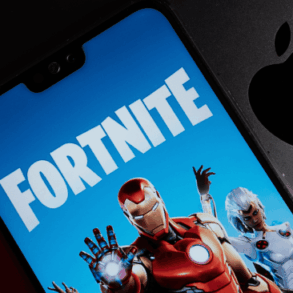Ugly economics behind Apple buy now pay later system BNPL: Apple’s foray into buy now, pay later (BNPL) presents a fascinating, yet potentially troubling, economic landscape. This system, seamlessly integrated into Apple’s ecosystem, offers seemingly attractive payment options, but a closer look reveals potential pitfalls for consumers and the broader financial market. How does Apple’s BNPL model compare to existing players?
What are the hidden costs and risks, and what are the potential impacts on consumer behavior and the economy as a whole?
This analysis delves into the mechanics of Apple’s BNPL, examining its unique features, the potential economic implications, and the financial incentives that drive user behavior. We will explore the hidden costs and risks, consider the regulatory landscape, and finally, speculate on the future of BNPL in relation to Apple. Prepare to uncover the potentially ugly side of this seemingly convenient financial system.
Buy Now Pay Later (BNPL) Explained
Buy Now Pay Later (BNPL) services have become increasingly popular, offering consumers a way to purchase goods and services immediately while paying for them over time. This convenience, however, comes with potential financial implications that need careful consideration. Understanding the mechanics, models, and user experience of BNPL is crucial for making informed financial decisions.
Core Function of BNPL Services
BNPL services act as a short-term financing solution for consumers. They allow users to purchase items immediately and defer the payment to a later date, often in installments. This essentially turns a single large payment into a series of smaller, more manageable payments.
Mechanics of BNPL Transactions
The mechanics of BNPL transactions typically involve the consumer selecting the BNPL option at checkout. The BNPL provider then evaluates the consumer’s creditworthiness, often based on readily available data like credit scores and payment history. If approved, the consumer completes the purchase, and the payment is either spread over multiple installments or deferred until a specified date. The BNPL provider acts as an intermediary between the consumer and the merchant.
BNPL Models
Various BNPL models cater to different consumer needs and preferences. These include:
- Installment Plans: This model allows consumers to pay back the purchase amount in fixed, periodic installments over a specified period, typically within a few months. Examples include monthly payments for a new phone or appliance.
- Deferred Interest: This model allows consumers to pay the full purchase price at a later date, often with no interest added, although late payment fees or other charges may apply. This is usually for a short period, like 6 weeks or 3 months. This is commonly seen for smaller purchases like online shopping.
- Pay in Four: This is a popular model, especially for online purchases, where consumers can pay for their purchases in four equal installments over a set period, typically a few weeks.
User Experience with BNPL
The user experience of BNPL services is generally straightforward. Consumers can usually select the BNPL option at the checkout and follow the prompts to complete the purchase. The process is often integrated directly into the merchant’s website or app.
BNPL Providers and Target Audiences
Various companies offer BNPL services, each targeting specific consumer segments. Some popular providers include Affirm, Afterpay, Klarna, and PayPal. Each company has a distinct marketing strategy, and often targets specific demographic preferences. For example, Affirm may focus on building credit for young adults, while Afterpay might target consumers with a focus on immediate gratification.
Comparison of BNPL Services
The following table provides a comparison of various BNPL services, including interest rates and fees:
| Provider | Interest Rates | Fees |
|---|---|---|
| Affirm | Variable, depending on creditworthiness | Potential late payment fees, application fees |
| Afterpay | No interest charged if paid on time | Potential late payment fees |
| Klarna | Variable, depending on creditworthiness | Potential late payment fees, other transaction fees |
| PayPal Credit | Variable, depending on creditworthiness | Potential late payment fees, other transaction fees |
Note: Interest rates and fees are subject to change and vary based on individual circumstances. Always review the terms and conditions of each BNPL provider before using their services.
Apple’s BNPL System
Apple’s foray into the Buy Now Pay Later (BNPL) market is significant, not just because of the company’s immense brand recognition but also due to its potential to reshape the financial landscape within its existing ecosystem. The system, still relatively new, promises a seamless integration with Apple Pay and other services, suggesting a more comprehensive approach to financial management compared to other BNPL providers.
This integration is expected to significantly impact user experience and potentially drive adoption within its vast user base.
Unique Features of Apple’s BNPL System
Apple’s BNPL system, while still under development and details limited, is likely to incorporate features that leverage the strengths of its existing infrastructure. These unique features could include tight security protocols, robust fraud prevention measures, and potentially even rewards programs linked to existing Apple services like Apple Music or AppleCare. This interconnectedness could provide a compelling value proposition for users accustomed to the convenience and security of the Apple ecosystem.
Integration with Apple’s Ecosystem
Apple’s BNPL system is designed to be deeply integrated with its existing services, fostering a seamless user experience. This integration could involve automatic syncing with Apple Pay, allowing users to easily track and manage their BNPL purchases alongside their other payments. Further integration with Apple Wallet, for example, could simplify the payment process, eliminating the need for separate apps or websites.
The goal appears to be creating a unified financial platform within the Apple ecosystem.
Comparison to Other BNPL Systems
While details remain scarce, Apple’s BNPL system is likely to differentiate itself from competitors by focusing on user experience, security, and integration with existing services. Other BNPL providers often focus on aggressive marketing and promotions. Apple, on the other hand, is expected to emphasize the seamless integration with its ecosystem, thus providing a more holistic financial solution for its users.
The perceived value proposition could include a higher level of security and transparency due to Apple’s established reputation in these areas.
Potential Market Impact
Apple’s entry into the BNPL market could significantly alter the landscape. If successful, it could disrupt the existing BNPL market share, forcing competitors to adapt and innovate. The potential impact is significant, especially considering Apple’s substantial user base and established brand trust. The introduction of a BNPL system from Apple could create a new benchmark for the convenience and security of financial transactions, potentially leading to increased adoption rates and a broader use of BNPL technology.
Value Proposition for Users
Apple’s BNPL system, due to its integration with the Apple ecosystem, aims to provide a convenient and secure way for users to make purchases. This convenience is expected to be enhanced by its integration with Apple Pay, making the overall process streamlined and user-friendly. Furthermore, Apple’s reputation for security and privacy could translate into a higher level of user trust compared to some other BNPL providers.
Advantages and Disadvantages of Apple’s BNPL
| Advantages | Disadvantages |
|---|---|
| Seamless integration with Apple ecosystem | Limited information regarding specific interest rates and fees |
| Potential for enhanced security and privacy | Unknown impact on existing BNPL providers |
| Improved user experience through familiar interface | Potential for limited flexibility in payment options |
| Strong brand recognition and trust | Dependence on Apple’s existing infrastructure |
Economic Implications of Apple BNPL
Apple’s foray into Buy Now Pay Later (BNPL) presents a complex interplay of potential benefits and risks for consumers and the broader economy. While BNPL can stimulate spending and potentially offer convenient payment options, it also carries the inherent danger of encouraging overspending and accumulating debt. Understanding these implications is crucial for assessing the overall impact of this new financial tool.
Potential Economic Benefits for Consumers
BNPL services, such as Apple’s, can empower consumers by providing flexible payment options for purchases. This flexibility can be particularly advantageous for individuals who might otherwise face financial constraints in making large purchases. By allowing consumers to spread out payments, BNPL can potentially make expensive items more accessible. For instance, a consumer might be able to afford a new iPhone or other major purchase without having to make a large upfront payment.
This accessibility could increase consumer spending and stimulate economic activity, potentially boosting various sectors of the economy.
Increased Consumer Spending and Economic Activity
The availability of BNPL options could lead to increased consumer spending. Consumers who might have previously hesitated to make large purchases due to budgetary constraints may be more inclined to do so with BNPL. This increased demand could positively affect businesses by driving up sales and creating opportunities for job growth in retail and related industries. The ripple effect could extend to other sectors, boosting economic activity across the board.
Potential Risks to Consumers: Overspending and Debt Accumulation
A key concern with BNPL is the potential for consumers to overspend. The ease of spreading payments can lead to a lack of awareness about the total cost of a purchase and the long-term financial implications. Without careful budgeting and financial planning, consumers might find themselves accumulating debt and facing difficulties in meeting their financial obligations. A common example is the temptation to make more purchases than one can afford, leading to an accumulation of debt.
Competition Among Financial Institutions and BNPL Providers, Ugly economics behind apple buy now pay later system bnpl
The introduction of BNPL services by major players like Apple will likely intensify competition among financial institutions and existing BNPL providers. This competition could drive innovation and potentially lead to more favorable terms for consumers. However, it also presents challenges for smaller players who may struggle to compete with the resources and market reach of larger corporations.
Impact on Traditional Retail Models and Credit Access
Apple’s BNPL service may disrupt traditional retail models by offering an alternative payment option to consumers. This could lead to a shift in consumer behavior, as customers become accustomed to flexible payment plans. The service may also influence how retailers structure their pricing and promotional strategies. Furthermore, the availability of BNPL could impact traditional credit access, potentially creating new avenues for borrowing and influencing the overall credit market.
Potential Scenarios and Economic Impacts
| Scenario | Potential Economic Impact |
|---|---|
| Increased Consumer Spending | Positive impact on businesses, potentially driving economic growth and job creation. |
| Consumer Overspending and Debt Accumulation | Negative impact on individuals’ financial well-being, potentially leading to financial instability. |
| Intensified Competition | Innovation in BNPL services, potentially more favorable terms for consumers, but also challenges for smaller providers. |
| Disruption of Traditional Retail Models | Shift in consumer behavior and potential need for retailers to adapt their pricing and promotional strategies. |
| Impact on Credit Access | Potentially new avenues for borrowing, potentially affecting the credit market overall. |
Financial Incentives and User Behavior: Ugly Economics Behind Apple Buy Now Pay Later System Bnpl
Apple’s Buy Now Pay Later (BNPL) system, integrated into the Apple ecosystem, offers a compelling blend of convenience and financial incentives. This section delves into the intricate workings of these incentives, examining their potential impact on user behavior and spending patterns. It also explores the psychological aspects driving BNPL adoption and the risks associated with potential addiction.The financial incentives embedded within Apple’s BNPL system are designed to attract and retain users.
These incentives are often presented as attractive payment plans, sometimes with seemingly low or zero interest rates for short periods. However, hidden fees and interest rates can quickly increase the overall cost of the purchase if the user doesn’t adhere to the repayment schedule. These subtle, yet powerful, mechanisms can significantly impact user behavior, potentially leading to overspending and financial strain.
Interest Rates and Fees
Apple’s BNPL system, like other BNPL providers, often employs a tiered approach to interest rates and fees. The specifics of these rates and fees can vary depending on the retailer and the amount of the purchase. While some transactions might offer a period of zero interest, this often comes with conditions, such as minimum purchase amounts or specific repayment terms.
A detailed breakdown is not publicly available, and this lack of transparency can obscure the true cost of borrowing. This ambiguity can influence consumers, potentially leading them to believe that the financing is cheaper than it actually is. Furthermore, some BNPL providers might not disclose all the terms and conditions, leading to unexpected charges and difficulties later on.
Apple’s Buy Now Pay Later (BNPL) system, while seemingly convenient, hides some pretty ugly economics. It’s a bit like the way Sam Bankman-Fried’s crypto empire, as detailed in this article , operated with a complex web of financial maneuvers. Ultimately, these systems often trap consumers in cycles of debt and high interest rates, making a seemingly simple purchase far more costly in the long run.
Influence on User Behavior and Spending Patterns
The ease and accessibility of BNPL can significantly influence user behavior and spending patterns. The ability to purchase items immediately, without the immediate need for funds, can encourage impulsive buying. Users may be more inclined to make larger purchases than they would if they had to pay upfront, potentially leading to overspending and accumulation of debt. This is particularly true for consumers who are already prone to impulsive spending or those who struggle with financial discipline.
Apple’s Buy Now Pay Later (BNPL) system, while seemingly convenient, hides some pretty ugly economics. It’s all about subtly increasing the cost of goods, often with high interest rates and fees, and that’s a real concern. This practice is a bit like the way some online ads, like those featured on the ctrl walt delete podcast online ads site, might seem harmless but can still be a money pit.
Ultimately, the BNPL model often ends up trapping consumers in a cycle of debt, and that’s something to think about carefully.
Studies have shown that BNPL can contribute to a rise in consumer spending, but this increase is often not matched by an increase in savings or overall financial well-being.
Psychological Factors and BNPL Use
Psychological factors play a critical role in shaping user behavior regarding BNPL. The perceived “ease” of making purchases without immediately incurring the full cost often overrides rational financial decision-making. The system often leverages psychological principles to encourage impulsive purchasing, potentially leading to a cycle of overspending. The psychological effect of having “access” to funds, even if only temporarily, can create a feeling of abundance and freedom, which can lead to increased spending.
Potential for BNPL Addiction and Risks
The ease and accessibility of BNPL can contribute to the development of a pattern of overspending and financial mismanagement. The potential for addiction to BNPL and its related risks is a growing concern. This “addiction” manifests as a reliance on the system to fund purchases, rather than making responsible financial decisions. This can lead to significant financial problems, including high-interest debt and difficulty meeting financial obligations.
Furthermore, the lack of transparency regarding the true cost of borrowing can exacerbate the problem, as users may not fully understand the long-term implications of their choices.
Consumer Spending Habits Before and After Adopting BNPL
Data on consumer spending habits before and after adopting BNPL is not readily available in a public format. However, anecdotal evidence and studies on similar BNPL systems suggest that there’s a correlation between the adoption of BNPL and an increase in spending, particularly on non-essential items. Without comprehensive data, it’s difficult to definitively quantify this correlation, though the increased accessibility to credit and the perception of lower immediate costs likely play a significant role.
Apple’s Buy Now Pay Later (BNPL) system, while seemingly convenient, hides some pretty ugly economics. It’s all about those interest rates and hidden fees, and frankly, it’s a bit of a rip-off. Speaking of rip-offs, have you seen the new Hisense TVs? They’re fantastic, boasting sleek designs that blend seamlessly with any décor, as seen in hisense goes big with artwork friendly canvas tvs.
But back to the BNPL issue, it’s not just about the interest, it’s the way companies are making money off your desire for instant gratification. It’s a complex issue, and not always straightforward.
More research and comprehensive studies are needed to fully understand the long-term impact on spending patterns.
Hidden Costs and Risks

Apple’s Buy Now Pay Later (BNPL) system, while seemingly convenient, introduces a complex web of hidden costs and potential risks for consumers. The allure of immediate gratification can mask the potentially detrimental financial implications if not approached with careful consideration. Understanding these hidden costs is crucial for responsible financial decision-making.The seemingly effortless nature of BNPL can lead users to overspend and accumulate debt without fully comprehending the associated interest charges and fees.
BNPL often presents a deceptive simplicity, encouraging impulsive purchases without a clear understanding of the long-term financial consequences. This is especially pertinent in today’s economy, where individuals face various financial pressures and the temptation to use BNPL for immediate needs can be high.
Hidden Costs Associated with Apple BNPL
BNPL systems often impose hidden fees beyond the advertised interest rates. These fees can include application fees, late payment penalties, and potentially high-interest rates for missed payments. These hidden costs are sometimes buried in the fine print, making them easily overlooked by consumers.
Potential Risks for Consumers
Late payments can quickly spiral into a cycle of debt. High-interest charges and penalties for late payments can significantly increase the overall cost of a purchase, making it challenging to repay the loan in a timely manner. This can have a detrimental effect on credit scores and future financial opportunities. Moreover, the lack of clear transparency about the terms and conditions of the BNPL agreement can leave consumers vulnerable to unexpected charges.
BNPL and Debt Accumulation
BNPL systems can contribute significantly to debt accumulation, especially when used impulsively or without a clear budget. Consumers might find themselves making multiple BNPL purchases, leading to a snowball effect of increasing debt and financial strain. The ease of access to credit through BNPL can encourage overspending and make it difficult for users to stick to their budget.
Financial Hardship Examples
Imagine a student using BNPL for a new laptop, initially seeming manageable. However, unforeseen circumstances, like a job loss or unexpected medical expenses, could make it difficult to keep up with payments, potentially leading to significant financial hardship. This is just one example of how BNPL use can easily lead to financial instability if not managed carefully. A similar scenario could occur with a family facing unexpected expenses.
These circumstances demonstrate the potential for BNPL to exacerbate existing financial challenges.
Real-World Case Studies/Statistics
While precise case studies specific to Apple’s BNPL system are scarce, anecdotal evidence and reports from other BNPL providers highlight the potential for misuse. Studies consistently show a correlation between BNPL usage and increased debt levels, especially among younger demographics. This underscores the importance of careful consideration and responsible financial management when engaging with these services.
Comparison of BNPL Costs and Risks
| BNPL Provider | Interest Rates | Late Payment Fees | Application Fees | Potential Risks |
|---|---|---|---|---|
| Apple BNPL | [Placeholder – Requires further research] | [Placeholder – Requires further research] | [Placeholder – Requires further research] | Late payments can impact credit scores and future borrowing; potentially high interest rates for missed payments; lack of clear transparency can lead to unexpected charges. |
| [Other BNPL Provider 1] | [Example Rate] | [Example Fee] | [Example Fee] | [Example Risks] |
| [Other BNPL Provider 2] | [Example Rate] | [Example Fee] | [Example Fee] | [Example Risks] |
Note: This table is a placeholder and requires specific data for Apple BNPL and other providers.
Regulation and Industry Standards
The Buy Now Pay Later (BNPL) industry, while offering convenience, faces significant regulatory challenges. The rapid growth of BNPL services has outpaced the development of comprehensive regulatory frameworks, leading to concerns about consumer protection, financial stability, and competition. This section examines the current regulatory landscape, potential future changes, and the role of industry standards in mitigating risks associated with BNPL.The current regulatory environment for BNPL services is fragmented and often reactive.
Many jurisdictions are still developing specific regulations to address the unique characteristics of BNPL, leading to variations in rules across countries and regions. This lack of consistency can create challenges for businesses operating in multiple markets and for consumers seeking clear information about their rights and responsibilities.
Current Regulatory Environment
The regulatory environment for BNPL services varies widely across countries. Some jurisdictions have adopted a cautious approach, focusing on consumer protection through rules related to transparency, disclosures, and debt management. Other jurisdictions have taken a more comprehensive approach, encompassing aspects of financial stability and competition. This diverse regulatory landscape highlights the need for international collaboration and harmonization of standards.
Potential for Regulatory Changes
The BNPL sector is evolving rapidly, and regulators are adapting to keep pace. Potential regulatory changes may address issues like excessive interest rates, predatory lending practices, and the potential for financial instability. Increased scrutiny of BNPL platforms’ risk management practices and data security protocols is also likely. Regulations might require clearer labeling of fees and costs associated with BNPL services, potentially leading to a more transparent market.
Regulatory Frameworks Across Different Countries
The regulatory frameworks for BNPL services differ significantly across regions. The European Union, for instance, has a more comprehensive regulatory framework for consumer credit, which may influence the regulations applied to BNPL services. In contrast, some other regions might adopt a more sector-specific approach, focusing primarily on consumer protection aspects.
Role of Industry Standards
Industry standards play a crucial role in promoting fair and transparent BNPL practices. Self-regulatory initiatives, such as establishing clear guidelines for disclosure, pricing, and risk management, can help ensure consumer protection and market integrity. Standards can also contribute to the development of best practices that promote responsible use of BNPL services by both consumers and businesses.
Future Developments in BNPL Regulation
Future developments in BNPL regulation may include stricter requirements for platform licensing and oversight. Regulations might focus on preventing excessive consumer debt and promoting financial literacy. Additionally, there’s a potential for greater harmonization of BNPL regulations across countries to create a more level playing field for businesses operating internationally. Increased scrutiny of the environmental impact of BNPL services might also emerge as a future concern.
Regulatory Landscape Table
| Region | Regulatory Status | Key Features |
|---|---|---|
| EU | Developing | Comprehensive consumer credit regulations; potential influence on BNPL rules. |
| United States | Evolving | Fragmented approach; various states developing specific regulations. |
| Asia | Diverse | Varying levels of regulation; some countries focused on consumer protection, others on financial stability. |
| Australia | Established | Existing regulations regarding consumer credit; BNPL practices under scrutiny. |
Future of BNPL in Relation to Apple
The Buy Now Pay Later (BNPL) landscape is rapidly evolving, and Apple’s entry into this space is poised to significantly impact its trajectory. Understanding the potential future of BNPL, especially with Apple’s involvement, requires considering various factors like user behavior, technological advancements, and regulatory pressures. Apple’s BNPL integration will undoubtedly reshape the financial ecosystem, and its success hinges on balancing user convenience with financial responsibility.The future of BNPL will be shaped by a confluence of factors, including the evolving regulatory environment, the emergence of new technologies, and the continuous shift in consumer preferences.
Apple, with its vast user base and established brand reputation, will undoubtedly play a crucial role in this transformation. Predicting precise outcomes is difficult, but analyzing trends and potential scenarios offers valuable insights into the possible future of BNPL, particularly with Apple’s system at the forefront.
Future Trends for BNPL Services
BNPL services are expected to evolve beyond simple payment options, integrating more seamlessly into broader financial ecosystems. This evolution will likely involve a shift toward greater personalization, offering tailored payment plans based on individual user profiles and spending habits. Moreover, integration with existing financial platforms and accounts will become more commonplace, streamlining the user experience and providing greater convenience.
For instance, the ability to link a BNPL account to a user’s existing Apple Pay account will likely become standard.
Potential Future Features and Developments in Apple’s BNPL
Apple’s BNPL system, given its integration with Apple Pay and the wider Apple ecosystem, could offer a more integrated and secure user experience. Potential features include:
- Enhanced Security Measures: Strengthened fraud prevention measures, potentially incorporating biometrics and advanced risk assessment algorithms, could further improve user trust and security.
- Integration with Apple Wallet: A seamless integration with Apple Wallet, allowing users to manage their BNPL transactions within the same convenient interface, could increase adoption.
- Personalized Payment Options: Tailoring payment plans and interest rates based on user credit history and spending patterns would provide a more personalized and potentially beneficial experience for some users.
These features, while speculative, reflect the potential for Apple to leverage its technological strengths to create a sophisticated and user-friendly BNPL service.
Potential Competition and Partnerships in the BNPL Market
The BNPL market is already competitive, with numerous established players. Apple’s entry will likely attract further competition, as existing providers seek to maintain market share and innovative startups emerge. Potential partnerships could include collaborations with financial institutions to offer bundled financial services or with retailers to provide tailored payment options.
Potential Innovations in BNPL Technologies and Applications
Innovation in BNPL technologies will likely focus on enhancing user experience and increasing financial transparency. These innovations could include:
- AI-Powered Risk Assessment: Artificial intelligence could be used to more accurately assess user risk, leading to personalized and efficient credit decisions.
- Automated Payment Scheduling: Automated payment scheduling features, allowing users to set up recurring payments or flexible payment plans, could increase user convenience.
- Integration with Other Fintech Services: Seamless integration with other fintech services like budgeting apps and investment platforms could offer a more comprehensive financial management experience.
These innovations would aim to streamline the BNPL process, making it more accessible and convenient for a broader range of users.
Areas Where BNPL May Encounter Further Regulation or Scrutiny
BNPL services are increasingly under regulatory scrutiny due to concerns about consumer protection and the potential for predatory lending practices. Specific areas of concern include:
- Debt Management: Regulators may focus on mechanisms to ensure that users can effectively manage their BNPL debt, particularly in cases of overspending.
- Transparency of Fees: Greater transparency concerning fees and interest rates, with clear and easily understandable disclosures, is likely to be mandated.
- Protection from Unscrupulous Practices: Regulations aimed at preventing predatory lending practices and protecting vulnerable consumers from excessive debt burdens are expected.
Potential Scenarios for the Future of BNPL in the Context of Apple’s System
| Scenario | Description |
|---|---|
| Dominant Player | Apple’s BNPL service becomes the leading platform, leveraging its ecosystem to capture significant market share. |
| Competitive Landscape | Multiple BNPL providers coexist, competing on features, pricing, and user experience. |
| Regulatory Tightening | Stringent regulations limit the scope and features of BNPL services, impacting their growth potential. |
| Innovation-Driven Growth | BNPL services become increasingly integrated into broader financial platforms, fostering innovation and user adoption. |
End of Discussion
In conclusion, Apple’s buy now, pay later system, while initially appealing, presents a complex interplay of economic forces. While offering potential benefits for consumers, the system also carries inherent risks, including overspending, debt accumulation, and potentially distorted spending patterns. The regulatory landscape surrounding BNPL is still evolving, and the long-term impact on the financial market remains uncertain. This analysis provides a crucial starting point for understanding the multifaceted nature of Apple’s BNPL initiative and encourages further investigation into its future trajectory.











